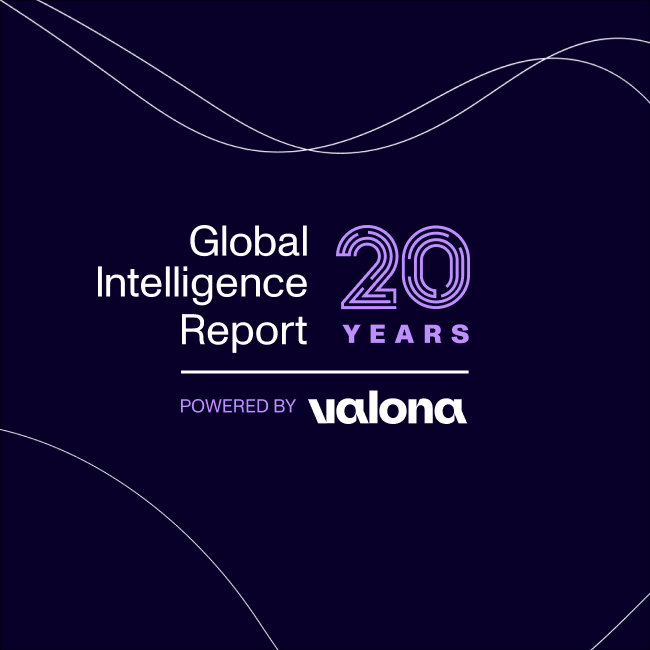
Exploring different types of Competitive Intelligence
Discover the key types of competitive intelligence, how they work, and examples of each. Learn how to gather market, product, customer, and more insights.
Knowing your competition goes beyond names on a list—it’s a deep dive into their strategies, strengths, and the gaps they leave open. The real advantage comes from understanding how they move and what drives them.
This is where competitive intelligence steps in, serving as a powerful tool to unlock these insights. But competitive intelligence isn’t a one-size-fits-all concept; it branches into various types, each with its own set of benefits.
Dive in as we explore these key types of competitive intelligence, complete with real-world examples to show how they come alive in action.
Understanding Competitive Intelligence and its relevance
Competitive Intelligence (CI) is the ethical process of gathering and analyzing information on competitors, market trends, and external business environments. It helps identify shifts in the market, understand competitor moves, and support sound decision-making.
Importantly, CI relies on legal and ethically sourced data—there’s no espionage involved. The information comes from publicly available sources or third-party research firms.
For large enterprises and multinational corporations, the complexity of competition requires proactive action. CI enables these organizations to anticipate market changes instead of reacting to them.
They can also stay ahead of competitors from the insights that support long-term planning and innovation. With the right intelligence, corporations can make data-driven decisions that reduce business risks, such as entering a new market without knowing the full competitive field.
Integrating CI into business strategy provides several benefits:
Improved market positioning: You can better understand competitors’ strengths and weaknesses, which helps tailor your market approach.
Informed product development: CI informs product teams about what customers need and expect, ensuring that new offerings align with current market demand.
New opportunities: Whether it’s identifying a gap in a market or adopting a disruptive technology, CI helps you spot opportunities for growth.
Risk management: CI helps protect your business from potential threats like regulatory changes, economic shifts, or disruptive competitors.
Enhanced adaptability: By integrating CI into strategic planning, your organization becomes more resilient and can adapt more quickly to market shifts.
Competitive Intelligence is key to minimizing risks and optimizing strategic planning. Competitive Intelligence helps enterprises make informed, proactive decisions in complex markets.
Key types of Competitive Intelligence: examples and how to gather
#1: Market Intelligence
Market intelligence involves gathering and analyzing data about the market field, including industry trends, customer demographics, and overall market conditions.
One common way companies use market intelligence is to spot emerging trends. For example, an enterprise might monitor shifts in consumer preferences or technological advancements. This allows for adjusting your product offerings or services to fit new market demands.
Another key application is assessing competitor market share, which helps position your marketing campaigns more effectively, ensuring you emphasize areas where your competitors might be weak or where the market is underserved.
To gather market intelligence effectively, you should rely on a combination of methods:
Industry reports: These offer a comprehensive view of market trends and key players.
Market surveys: Direct feedback from customers helps you understand their preferences and pain points.
Public data sources: Government statistics, financial reports, and other public data are valuable for market analysis.
Trade shows and conferences: These events are ideal for networking, learning about new developments, and scouting competitors.
Thought leaders and industry publications: Following these sources ensures you stay informed about cutting-edge trends and insights.
Competitor research: Regularly reviewing competitor websites, press releases, and marketing materials gives you a clearer picture of their strategies and positioning.
Market intelligence is both a proactive and reactive process. You need to continuously gather data to anticipate changes while reacting quickly to shifts in the market field.

#2: Product Intelligence
Product intelligence helps companies stay competitive by understanding how products stack up against others in the market. This process involves analyzing competitor offerings to gain insights into their features, pricing strategies, customer satisfaction, and even potential weaknesses.
By gathering product intelligence, you can identify areas where your product can shine, either by addressing gaps in your competitor’s offerings or by improving upon their strengths.
For instance, if a competitor has a popular feature that your product lacks, you can prioritize adding something similar or better. On the flip side, if their pricing is more attractive, you might reconsider your pricing strategy to offer better value or justify a premium.
Product intelligence also gives you a better sense of competitor timelines. By keeping an eye on their development cycles, you can anticipate when they might release new features or products and plan your own launches accordingly.
This way, you can preemptively adjust your strategy to ensure you’re not caught off guard by new offerings in the market.
To effectively gather product intelligence, you should:
Monitor competitor product launches and updates regularly. This helps you stay informed about what they’re doing and how they’re positioning their products.
Keep an eye on customer reviews, especially on e-commerce platforms. These reviews reveal what customers like and dislike about your competitor’s products, allowing you to identify opportunities for improvement in your offerings.
Conduct product benchmarking and testing. This gives you first-hand experience with competitor products and lets you see how they compare in terms of functionality, user experience, and performance.
Utilize feedback from your sales and customer service teams. These teams often have direct contact with customers and can provide insights into what customers are saying about your product versus your competitors.

#3: Technological Intelligence
Technological intelligence focuses on collecting and analyzing data on technological advancements and innovations that could impact your industry or market.
Organizations use technological intelligence to adopt emerging technologies before competitors. This could be anything from integrating artificial intelligence into customer service processes to streamlining manufacturing operations with automation.
By identifying and implementing these trends early on, your business can gain a competitive edge. Additionally, keeping track of the tech strategies of competitors allows you to adjust your own approach, ensuring you’re not left behind in the race for innovation.
A good example of this is spotting an upcoming disruptive technology, and adjusting your business strategy to either adopt it or pivot away from areas where it might replace existing processes.
To gather technological intelligence effectively, consider these best practices:
Monitor patent filings: Patents often provide insights into new technologies being developed. By tracking them, you can see where your competitors or the broader industry is headed.
Follow R&D publications: Research and development papers provide direct access to the innovations that are still in the early stages.
Stay updated with scientific journals: These publications often report on technological breakthroughs that might not still be widely known.
Subscribe to tech news and media: Industry-specific news sources keep you informed about the latest developments in technology.
Attend industry conferences: Conferences are invaluable for getting first-hand knowledge of technological advancements and networking with innovators.
Partner with universities or research institutions: Collaborating with academic institutions gives you insider insights into cutting-edge research that can shape the future of your industry.
#4: Strategic Intelligence
Strategic intelligence focuses on understanding the long-term goals and plans of your competitors. Key factors such as the competitors’ strategic partnerships, acquisitions, and overall business direction help position your company more effectively in the market.
One common application of strategic intelligence is anticipating competitor moves like mergers or alliances. If you track a competitor’s investments in a new region, it can inform your decision on whether to expand into that market or strengthen your position elsewhere.
Consider the following techniques to gather strategic intelligence effectively:
Monitor regulatory filings: Competitors often reveal key details about their future plans in documents submitted to regulatory authorities.
Review industry reports and investor presentations: These materials can offer clues about where a company is headed, such as new product lines or markets they are targeting.
Set up news alerts: Tracking news related to competitors, especially regarding executive leadership and strategic decisions, can give you an early warning of potential shifts.
Track social media of key executives: Executives sometimes hint at future strategies in interviews, posts, or comments on platforms like LinkedIn or Twitter.
Attend industry forums and conferences: These events are often places where major announcements are made, whether it’s a new partnership, acquisition, or market entry.
These methods keep you informed on where your competitors are going and adjust your own strategy to stay ahead.
#5: Tactical Intelligence
Tactical intelligence emphasizes short-term analysis of competitors’ immediate actions and strategies. It helps you make quick, informed decisions in response to your competitors’ pricing, promotions, and advertising.
One common example of this is adjusting your pricing strategy based on a competitor’s new sales campaign. If a competitor suddenly launches a major promotion, having tactical intelligence lets you respond quickly by offering a similar or better deal, ensuring you don’t lose market share.
Companies often track competitor activity during high-sales periods, such as Black Friday or holiday seasons, to avoid being caught off-guard by unexpected promotions or advertising pushes.
Several practices that help you gather tactical intelligence effectively:
Digital tools: Use tools to monitor competitor websites, social media channels, and online ads for real-time updates on promotions or price changes.
Sales team collaboration: Your sales team is on the frontlines and can provide valuable insights into what competitors are doing based on their interactions with customers.
Timely data collection: Because tactical intelligence is short-term in nature, you need to stay on top of real-time changes. The faster you can collect and analyze data, the quicker you can respond.
#6: Customer Intelligence
Customer intelligence is important for shaping business strategies that align with your customer’s needs and expectations. You can make informed decisions to improve both your products and customer experiences by gathering and analyzing data on customer behavior, preferences, and feedback.
Customer intelligence involves collecting data to better understand how your customers behave, what they prefer, and how they respond to your offerings. This data helps you tailor everything from product features to marketing messages, ensuring you deliver what your audience truly wants.
For example, businesses often use customer feedback to refine product features. If you notice multiple customers complaining about a specific flaw, addressing it can significantly improve customer exploration and satisfaction.
To effectively gather customer intelligence, you can use a variety of methods, including:
Customer surveys: These allow you to ask directly about their needs, preferences, and experiences.
Feedback forms: Often shorter, these forms provide quick insights into specific customer pain points or satisfaction levels.
Social media listening: Monitoring customer conversations on platforms like Twitter or Facebook can reveal unfiltered opinions about your brand or products.
In addition to direct feedback, analyzing data from customer relationship management (CRM) systems offers deeper insights into customer behaviors, such as purchasing patterns or service preferences.
CRM data can help you segment your audience and create more personalized marketing strategies.
Lastly, utilizing web analytics tools allows you to track how customers interact with your digital platforms. This can reveal important behavior patterns, such as how they maneuver through your website, what content they engage with, and where they drop off in the buying process.
#7: Environmental Intelligence
Environmental intelligence requires analyzing external factors like regulatory updates, economic shifts, and socio-political trends that can impact your operations.
Companies need to track new government regulations to adjust their compliance approach. If a law changes, affecting manufacturing standards, acting quickly could prevent costly penalties.
Another example is monitoring geopolitical events to foresee supply chain disruptions. If tensions rise between countries, being aware of potential trade restrictions allows you to pivot suppliers or reroute shipments before your operations are affected.
The following methods enable effective gathering of environmental intelligence:
Subscribe to government publications, regulatory bulletins, and economic forecasts for timely updates.
Use news aggregators and specialized industry reports to keep track of socio-political developments.
Maintain relationships with industry groups and advocacy organizations for early warnings on policy shifts.
Your business can stay ahead of external risks and remain resilient with this proactive approach.
Conclusion
Competitive intelligence is a multifaceted strategy that empowers businesses to not just survive but thrive by understanding market dynamics, competitors, and external influences. This article highlighted the primary types of competitive intelligence—market, product, technological, strategic, tactical, customer, and environmental—and discussed their applications and collection methods.
By integrating these intelligence types into business planning, organizations can sharpen their strategic edge, foster adaptability, and identify new growth opportunities.
To see how these practices can be seamlessly implemented, explore Valona’s competitive intelligence solution. With advanced features such as real-time data collection, comprehensive analytics, and intuitive reporting, our solution supports your competitive intelligence efforts at every stage.
Book a demo today and discover how to transform your insights into impactful strategies that set your business apart.
FAQ
What are the main types of competitive intelligence?
The main types of competitive intelligence include market intelligence, product intelligence, technological intelligence, strategic intelligence, tactical intelligence, customer intelligence, and environmental intelligence. Each type focuses on different aspects of the business environment to inform strategic decision-making and maintain a competitive edge.
Why is market intelligence important in competitive intelligence?
Market intelligence is crucial as it helps businesses understand industry trends, customer demographics, and market conditions. This knowledge allows companies to spot opportunities, tailor their offerings, and effectively position their marketing strategies to gain a competitive advantage.
How is product intelligence gathered?
Product intelligence is gathered by monitoring competitor product launches, analyzing customer reviews, conducting product benchmarking, and collecting feedback from sales and customer service teams. These methods help organizations understand competitor offerings and identify potential improvements for their own products.
What is strategic intelligence used for?
Strategic intelligence is used to understand competitors’ long-term plans, partnerships, and business directions. This type of intelligence helps companies anticipate competitor moves, such as mergers or new market entries, and adjust their own strategies to stay competitive.
What role does environmental intelligence play in competitive intelligence?
Environmental intelligence analyzes external factors like regulatory changes, economic conditions, and socio-political trends that could impact a business. This helps organizations prepare for potential disruptions, adjust compliance strategies, and maintain resilience against external risks.




